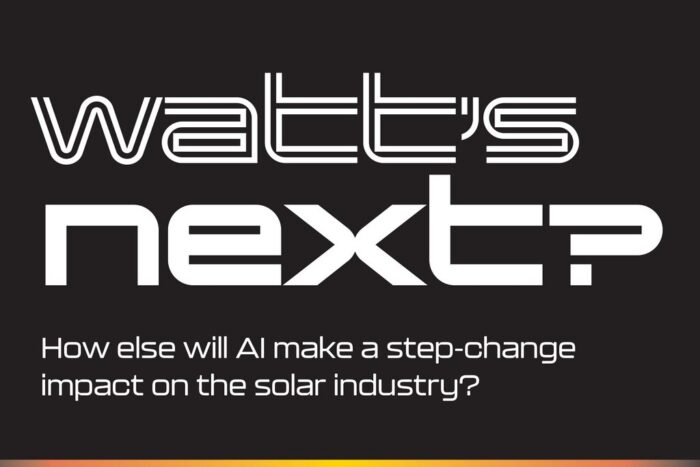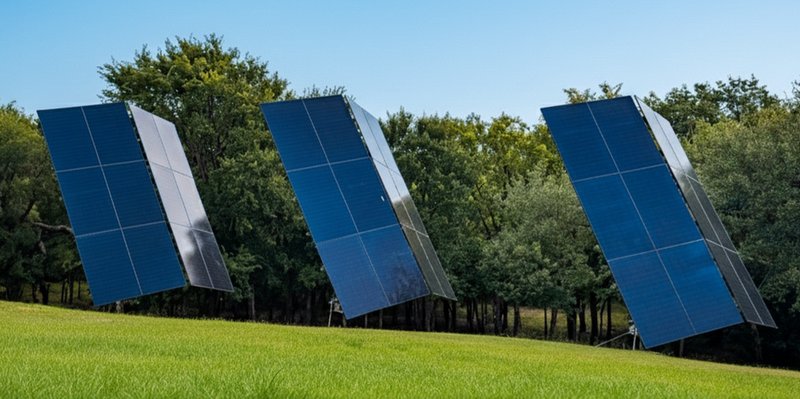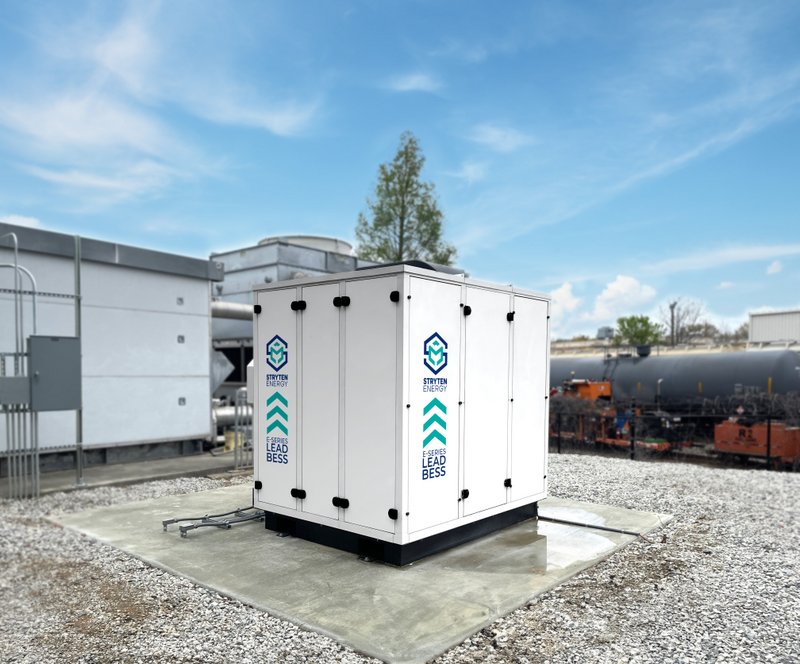How will AI make a step-change impact on the solar industry?

In “AI in Solar,” we asked a range of manufacturers, software providers, and service partners across the solar value chain how they are using AI in their business and product offering. We also asked what comes next?
AI in solar is moving into its next phase—and the experts we asked all pointed to one theme: anticipation. Whether it’s predicting weather-related losses, flagging equipment defects before they happen, or automating the drudgery of jobsite paperwork, AI is shifting from reactive analysis to proactive decision-making.
From underwriting to operations, supply chains to sales, here’s what industry leaders say is next in AI for solar. This piece originally published in the Q3 2025 issue of Solar Builder magazine. You can read the entire issue right here (and subscribe for free).
Loss patterns
“AI is helping the industry better understand patterns of losses that are highly weather-dependent, like soiling, shade, and snow. The better we understand the patterns that we are seeing, the better we can optimize solar energy generation to create a clean energy future.” — Gareth Walker, Omnidian
“We’re starting to see AI tackle more complex challenges, such as combining multiple data sources for better natural catastrophe modeling, spotting patterns in operational data that humans might miss, and even predicting maintenance issues before they become claims. For renewable energy insurance, where projects are getting larger and more complex every year, these capabilities are becoming essential for maintaining underwriting standards.” — Jason Kaminsky, kWh Analytics
Supply traceability and accountability
“The next evolution of AI in solar is all about anticipation and transparency. We’re exploring how AI can move from reactive analysis to proactive decision-making. Imagine knowing in advance which factories or material batches are most likely to produce defects based on historical trends and performance data. We’re also looking at how AI can support supply chain traceability. By combining it with blockchain and smart data from IoT devices, we envision a future where each solar or battery component can be traced back easily to its origin. ” — Arthur Claire, Sinovoltaics
Soft cost reductions
“If the ITC expires at the end of the year, the industry will be forced to reduce overall soft costs and expenses as much as possible to make up the gap. That’s where AI comes into play. AI holds the promise of expediting technological breakthroughs, securing regulatory and financial support by clearly demonstrating utility efficiency gains, and enabling smarter grid scaling as global energy demand grows exponentially. By automating complex processes that can take installers hours, days or even weeks to solve manually, AI will be a critical tool to democratize solar energy for all consumers.” — Curtis Merring, Aurora Solar
“Soft costs due to inefficient jobsite documentation, reporting, and quality control severely impacts the bottom line of solar businesses. Extra truck rolls to collect missing photos, hours of tedious manual work sorting photos, and project delays due to rejected proposals or designs and financing reports cost solar companies thousands of dollars per project. Adding AI capabilities to jobsite documentation and field operations will power unprecedented operational efficiency for solar companies and allow them to future-proof their business from market downturns with better margins.” — Kamal Shah, SiteCapture
Narrowing down crucial info
“During project development, successful AI solutions will emerge for removing friction and loss in information hand-off. Being able to recommend context for decision making from customer relationship management systems, data sheets of equipment, contracts and summarizing large dataset. During operations, AI solutions — which are great at pattern matching — will be able to help narrow down the problems that need human intervention. Allowing experts to focus on solving high-impact problems first rather than combing through an overwhelming amount of raw data. The next frontier is building trust in AI-assisted workflows where AI reduces complexity and empowers, rather than replaces, human expertise in high-value project decisions.” — Chetan Chaudhari, PowerUQ
“In the future, AI may be utilized to diagnose array health by using voltage and current measurements at string inputs,” — Daniel Friberg, Sungrow
“We’re also applying AI to one of the most notoriously outdated parts of the solar installation process: processing communications from third-party entities like city offices and utility companies. These emails often contain critical project updates—approvals, rejections, or requests for revision—but they’re inconsistent, unstructured, and easy to miss. By training our team and AI to analyze and classify this unstructured data in real time, we can flag next steps instantly, shave days off processing timelines, and tackle the delays that matter most to customers. Ultimately, this work is all about accelerating the solar journey for homeowners, cutting through inefficiency and reducing the friction that comes from external dependencies.” — Zachary Bloom, Freedom Forever.
Read more about Freedom Forever’s AI-tool Raya.
Smarter decisions & control
“Smarter microgrid control utilizes forecasting, in our case through AI, which then is fed into an optimization engine that will anticipate the future charging and discharging profile of battery systems within a PV microgrid. This creates a forward-looking controller which can anticipate load changes and renewable energy output changes and respond to them, leading to cost savings. This approach is called a model predictive controller and our research and project implementations show that this approach can save up to 80% in operational costs compared to traditional control strategies. This is already being realized in various use cases and will have an impact on the solar industry going forward.” — Michael Stadler, Xendee
“AI will be leveraged to eliminate operational waste from the system. Keep in mind that in 2023, 61.5% of U.S. energy consumption was rejected as waste heat. Intelligent energy storage is required to reduce or eliminate this curtailment. However, the capacity and charge/discharge rates must be properly matched to the production of the solar array to minimize energy loss. AI will also be used to optimize capital investments and project selection for grid upgrades, including scenario analysis, contingency sizing, dynamic rate design, resource mix planning, and many other applications.” — Jon M. Williams, Viridi
Frictionless workflows
“In the short to medium term, AI will automate multiple functions in solar businesses, including payments, accounting, hardware procurement, system design, plan sets & permitting and project management. We expect it will even automate customer-led research, system design and system ordering. This will enable existing employees of solar businesses to invest their time into higher value activities such as customer face time, marketing, process re-engineering and optimizing cash flow.” — Andrew McGuigan, OpenSolar
“To make the next leap in the industry, we must make the solar+ buying process as effortless and familiar as a Wayfair shopping experience. This could include AI-powered immersive experiences personalized to the customer, helping bridge the gap between their status quo and the new energy ecosystem they could be living in.” — Scott Nguyen, Bodhi





Comments are closed here.